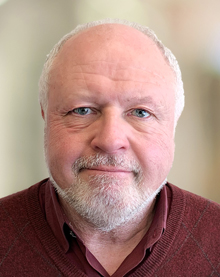Printed in the Spring 2025 issue of Quest magazine.
Citation: Smoley, Richard, "From te Editor's Desk Spring 2025" Quest 113:2, pg 2
 Daimon is a curious term. Although it has nothing to do with demon as used in present-day speech, it is the source of that word. In ancient Greek (which is where our word comes from), daimon refers to divine power in an abstract, impersonal sense as opposed to theos, which means god in a personal sense.
Daimon is a curious term. Although it has nothing to do with demon as used in present-day speech, it is the source of that word. In ancient Greek (which is where our word comes from), daimon refers to divine power in an abstract, impersonal sense as opposed to theos, which means god in a personal sense.
But that is not the only use of the word. Daimon also came to mean the divine power controlling the fate of individuals. As such, it resembled the genius of ancient Roman religion (which, again, has nothing to do with our current use of the word).
Perhaps the clearest description of the daimon as personal fate comes from the myth of Er in the tenth book of Plato’s Republic. Er is a soldier who has been wounded and left for dead on a battlefield. He undergoes a near-death experience which shows him the fate of souls in the afterlife. Finally he awakens and returns to life so that he can deliver his account to people still alive.
First, the deceased souls are divided into the good and the bad, who are sent off to heaven and hell respectively (or, if you prefer, devachan and kamaloka). Their punishment is not everlasting. When their sentences are up, they are assembled and prepared for rebirth on earth by choosing their daimones.
Lachesis (Fate), the sister of Anangke (Necessity), speaks: “Ephemeral souls, this is the beginning of another period of the mortal, death-bearing race. The daimon will not choose, but you will choose the daimon. The first one by lot will be the first to choose the life which will be his according to Necessity. But virtue is blameless: each one will have more or less of it, depending on whether they honor or dishonor it” (Republic, 617d-e). That is, the amount of virtue each soul will have is not predetermined but will vary according to individual choice.
The souls draw lots and are given the chance to choose the daimones—fates—that they will have in the next life. Some choose wisely, others foolishly. The soul who draws the first lot grabs the life that will give him “the greatest tyranny” but fails to notice that this fate also dooms him to eat his own children (an allusion to the myth of Tantalus). The crafty Odysseus draws the lowest lot, and there are not many fates left for him. He chooses the life of an ordinary citizen, declaring that he would have chosen it even if he had drawn the first lot.
We also learn that “it was necessary that the life chosen would determine a different character.” Plato is probably alluding to the famous axiom of Heraclitus: ethos anthropo daimon: “Character is fate for the human being.”
This myth presents a sophisticated treatment of the issue of fate versus free will. Often we feel that certain events and directions in our lives are not really matters of conscious choice, but are somehow fated. According to the myth, this is because although the major outlines of a life are predestined, that life was freely chosen by the individual before birth.
We could compare this myth to the concept of the “Body of Fate” described in W.B. Yeats’s highly abstruse system in A Vision (see Gary Lachman’s article in this issue). Yeats writes, “The stage-manager, or Daimon, offers his actor an inherited scenario, the Body of Fate, and a Mask or rôle as unlike as possible to his natural ego or Will, and leaves him to improvise through his Creative Mind the dialogue and details of the plot.” Some authorities equate this daimon or agathodaimon (“good daimon”) with the Magician of the Tarot deck. (For more on this subject, see lesson 3 of the National Lodge course on the Tarot.)
If we try to relate this concept of the daimon as fate to Theosophical teaching, we are led to the causal body, which really is the “body of fate.” It is a kind of encasement of the primordial monad, which remains essentially the same from incarnation to incarnation. This causal body incorporates all the karma that particular individual has accumulated, good and bad, and which will manifest as the time comes for ripening. These karmic seeds are contained in the “permanent atoms” of the physical, astral, and mental bodies. In A Study in Consciousness, Annie Besant explains:
A questioner sometimes asks: How can these permanent atoms be stored up within the causal body, without losing their physical, astral, and mental natures, since the causal body exists on a higher plane, where the physical, as physical, cannot be? Such an enquirer is forgetting, for a moment, that all planes are interpenetrating, and that it is no more difficult for the causal body to encircle the triad of the lower planes, than for it to encircle the hundreds of millions of atoms that form the mental, astral, and physical bodies belonging to it during the earth-life.
This leads us to another mystery: this daimon—often portrayed a guardian or parental spirit—somehow appears as other to the personal ego. Yet on the contrary, it is even more essentially the self than is the personality. It is only perceived as other because the personal ego has such a tenuous connection to it. Paradoxically, what is most true and intimately real about ourselves is perceived as remote, alien, and often inaccessible.
Richard Smoley

